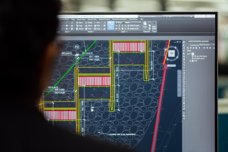What Earth Observation (EO) concepts are most relevant to the needs of the ecosystem conservation community?
Join this course, created with the ESA funded PEOPLE-ECCO Project, to increase your knowledge of EO principles, information, data access, and processing environments. With expert lectures and interactive practice activities you will learn how images are formed and to select suitable EO data for your application, considering spatial, temporal and spectral resolution and coverage. You will then learn how to visualize images for first inspection. Each module contains clear learning outcomes so that you can skip topics you already know and focus only on content relevant for your particular situation or learning goals. This course is the first of two online courses on Earth Observation for Ecosystem Conservation resulting from ESA's PEOPLE-ECCO Project.
For a limited time only: the PEOPLE-ECCO Project is offering special access to multiple live interactive sessions of specialized course content, expert Q&A, and networking. Ready to connect? Follow the project on LinkedIn to stay up to date.
Learning outcomes
- Identify the difference between point, vector and raster data
- Explain how an image is of a surface formed and how spectra of surfaces may differ
- Select suitable satellite images for your ecosystem conservation application from online repositories, based on spatial, spectral and temporal resolution and pre-processing level.
- Explain why there can be spatial misalignment between datasets.
- Visualize satellite images using different band combinations.






